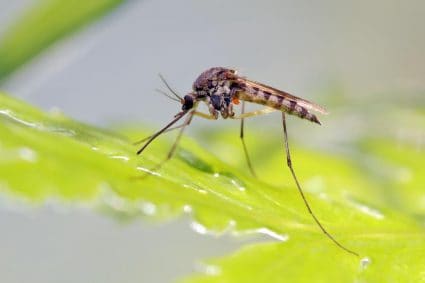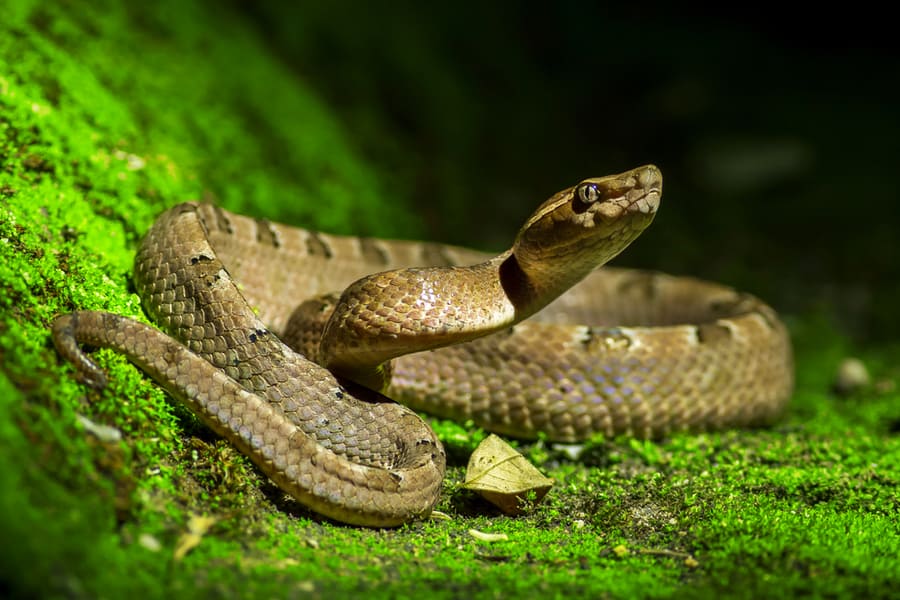
Are you dealing with a snake problem in your backyard or garden and not knowing how to catch it safely?
Do you want to know what trap to use and how to ensure the snake stays in it once caught?
If so, you are in the right place. This guide will cover everything you need to know about catching a snake in a trap, including how to do it safely and humanely.
Catching a snake in a trap can be daunting, especially if you are unfamiliar with the proper methods. Fortunately, the right knowledge and tools can be done safely and humanely.
To catch a snake in a trap, you need to:
- Identify the type of snake you are dealing with on your property.
- Decide whether you want to catch and release or kill the snake (inhumane and not recommended).
- Choose the appropriate trap to catch the snake.
Trapping and relocating snakes is a more humane and effective solution, instead of using harmful methods.
If you are wondering how you can safely catch a snake that has been living in your backyard without hurting it or what kind of trap to use to catch it, as well as how to ensure that the snake stays in the trap once it is caught, we have the answers.
3 Tips to Catch a Snake in a Trap
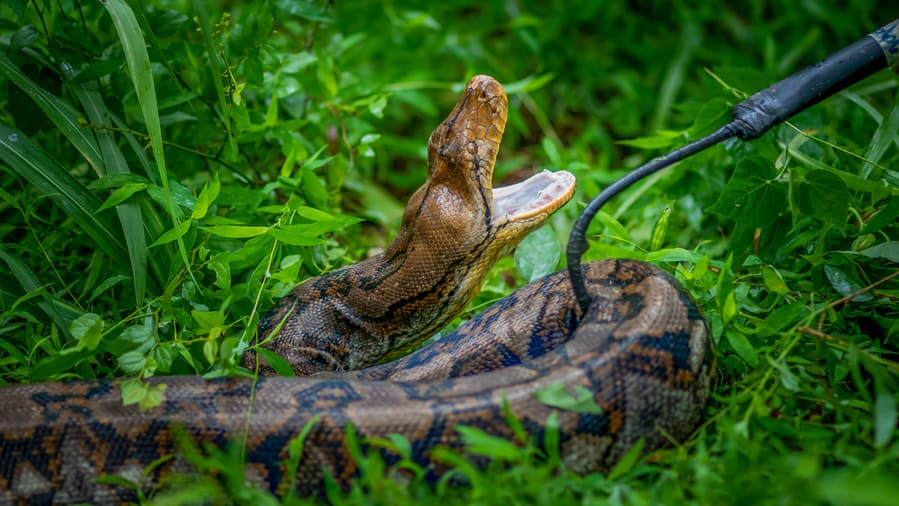
Following are some easy tips to catch a snake in a trap:
1. Identify the Snake
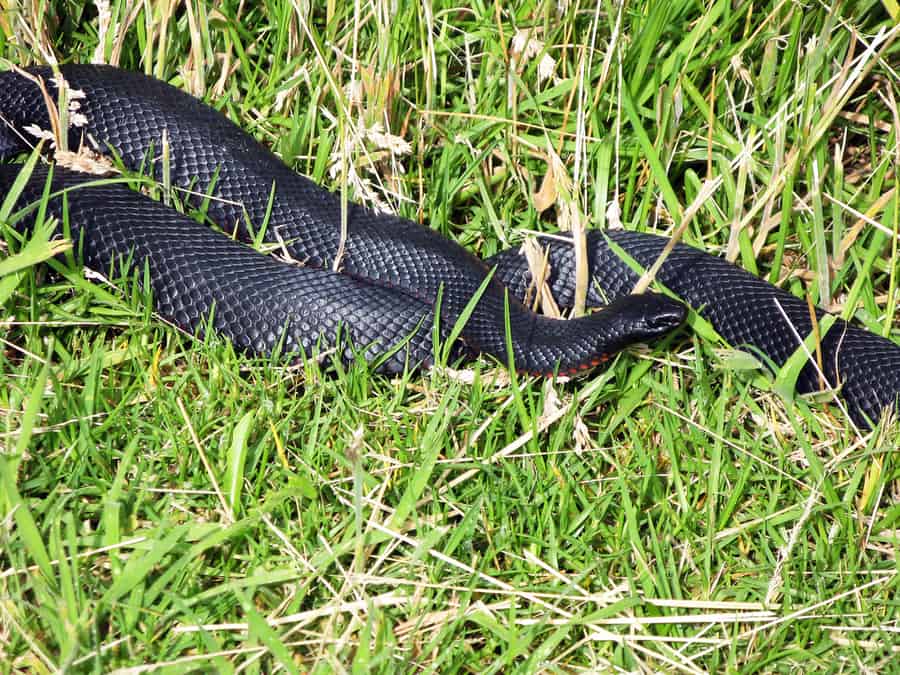
Identifying a snake before trapping it is an important step in the process of catching a snake.
Not all snakes are harmful, and some species are even protected by law, so it is essential to know what you are dealing with before taking action.
Physical Characteristics
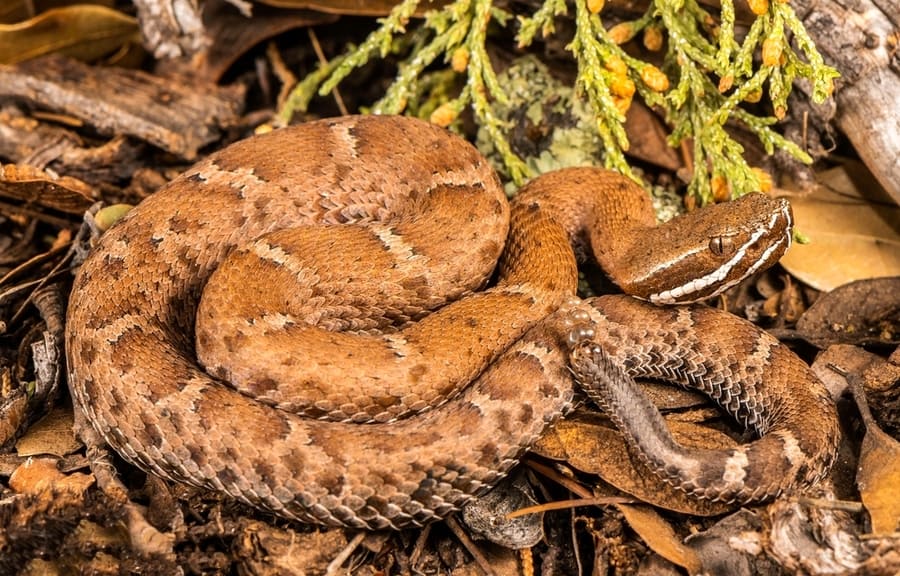
The first step in identifying a snake is to observe its physical characteristics.
Some of the things to look for include the color and pattern of its scales, the shape of its head, and the presence of any distinctive markings.
For example, a garter snake has a thin body and a green, brown, or black color, while a rattlesnake has a thick body and a diamond-shaped pattern on its back.
Snake’s Behavior
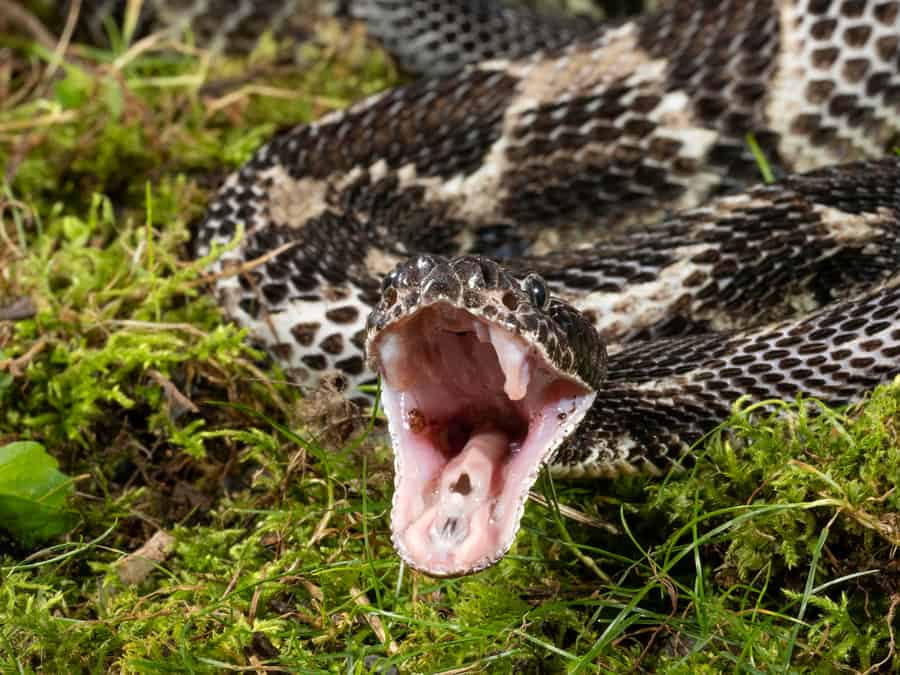
Another important factor to consider is the snake’s behavior.
Some snakes are more aggressive than others; some flee when confronted, while others defend themselves.
Understanding the behavior of the snake can help you to determine the best course of action.
Habitat of the Snake
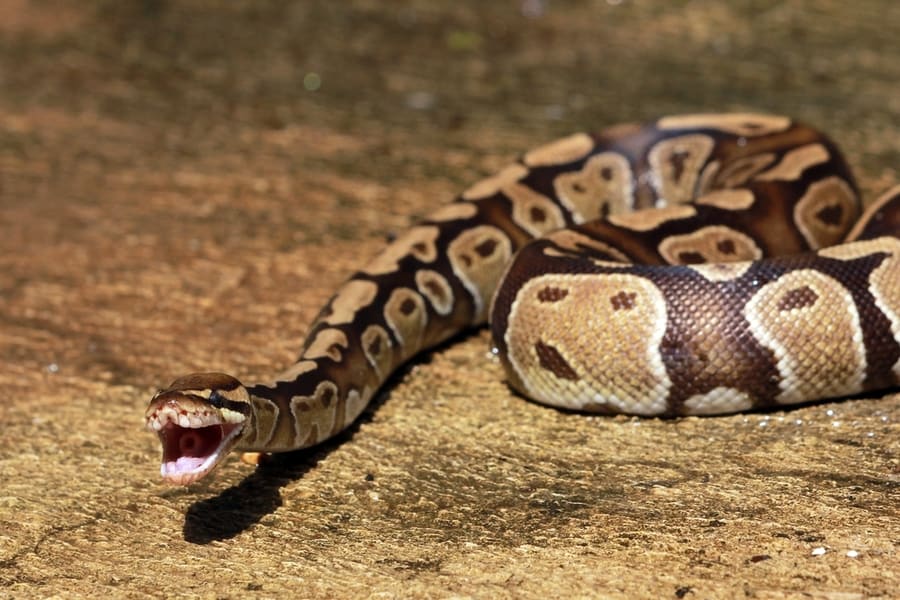
The third step is to consider the habitat of the snake, where it was spotted, or where it is likely to be at that moment. This will give an idea of what species of snakes can be found in that area and narrow down the possibilities.
It is important to note that identifying a snake from a safe distance is always the best practice.
If you cannot identify the snake, it is always best to consult with a professional, such as a herpetologist or a wildlife expert, for assistance.
Knowing the type of snake you are dealing with is crucial for several reasons, such as:
- First, it allows you to determine whether the snake is harmful, affecting the type of trap you use and how you release it.
- Second, it ensures you are not breaking any laws by trapping a protected species.
- Finally, it allows you to release the snake in the appropriate location, where it will have the best chance of survival.
Identifying a snake before trapping is crucial for ensuring the process is done safely and humanely.
By observing the physical characteristics, behavior, and habitat of the snake, you can determine what type of snake you are dealing with and take the appropriate action. It is always best to consult an expert if unsure of what snake you are dealing with.
2. Choose a Trap

Choosing the right snake trap is an important step in the process of catching a snake.
Several types of traps are available, each with its pros and cons.
It is important to choose a trap that is appropriate for the type of snake you are dealing with, and that is safe and humane for the animal.
Glue Trap

The first type of trap is the glue trap.
Glue traps have a sticky surface that the snake will get stuck to.
These traps are not recommended as they are inhumane, as the snake may suffer for a long time before dying.
Live Trap
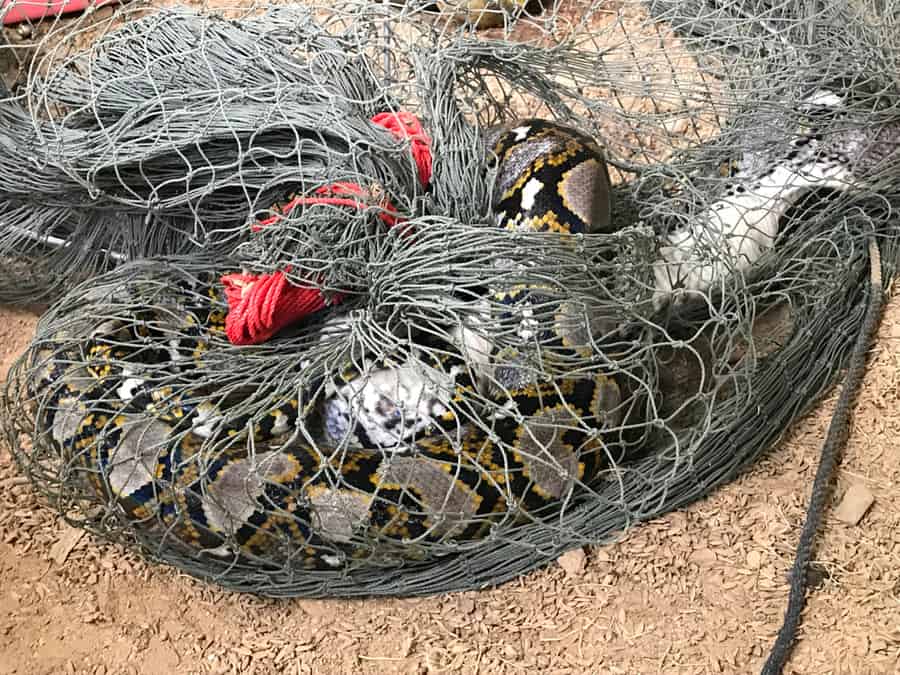
The second type of trap is the live trap. Live traps are designed to capture the snake without hurting it.
They come in various sizes and styles, such as box traps, cage traps, and funnel traps.
These are considered the most humane option as the snake can be released back into the wild unharmed.
It is best to check live snake traps regularly, at least once daily, to ensure that any trapped snake is not suffering.
Snakes are cold-blooded animals that rely on the sun’s heat to regulate their body temperature.
It is important to check the trap during the hottest part of the day to ensure the snake is not overheating.
Box Traps

Box traps are a type of live trap that is usually made of wood or metal and has a door that can be locked.
They are easy to use and can be baited with food to attract the snake.
Cage Trap

Cage traps are similar to box traps but are made of wire mesh, which makes them more durable and resistant to tampering.
Funnel Trap
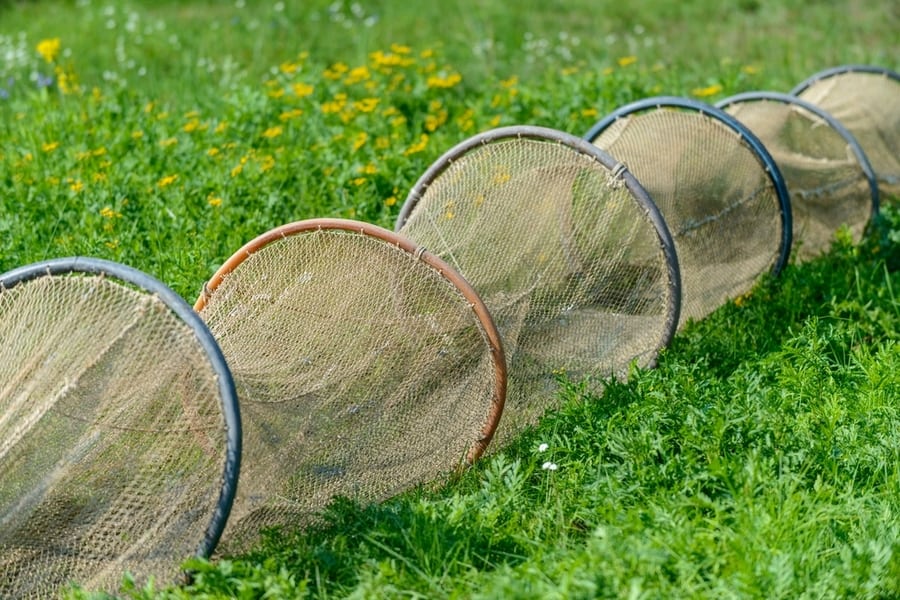
Funnel traps are another type of live trap that consists of a funnel-shaped opening that leads to a box or cage.
The snake enters that trap through the funnel but cannot find its way out.
Killing Trap
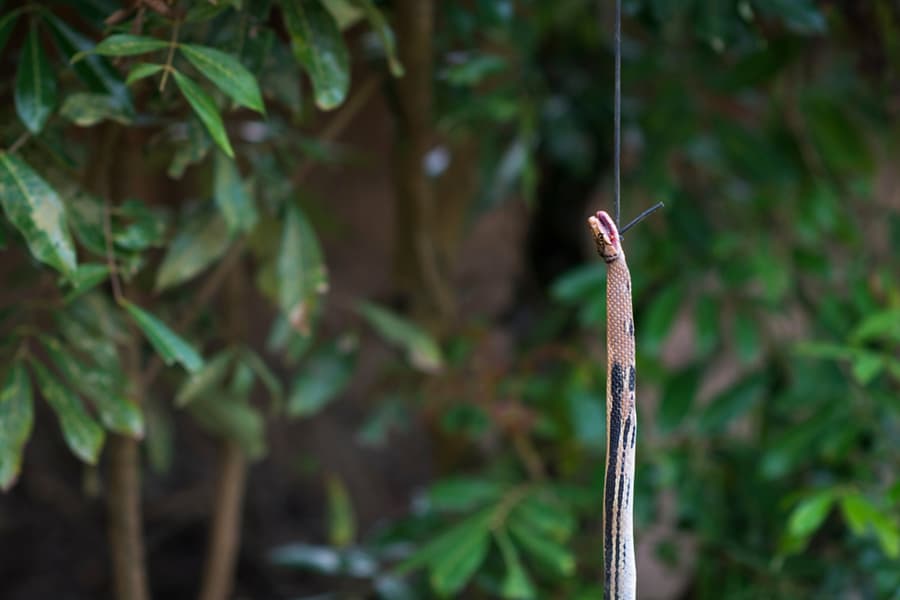
The killing trap is designed to kill the snake and is not recommended as it is inhumane.
When choosing a trap, it is important to consider the size of the snake you are dealing with:
A box or cage trap would be appropriate if you are dealing with a small snake, such as a garter snake.
If you are dealing with a larger snake, such as a boa constrictor, a cage trap would be more appropriate as it can contain the snake.
It is also important to consider the location where the trap will be placed.
If the trap will be placed in an area that is accessible to children or pets, it is important to choose a trap with a locking mechanism to prevent accidental release.
3. Setup and Baiting
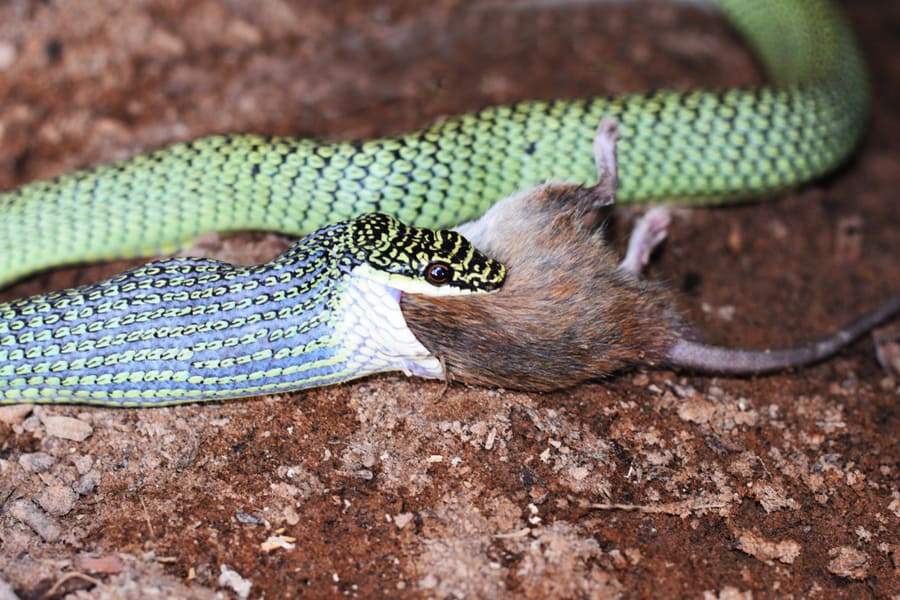
Once you have chosen a trap, the next step is to set it up. The key to successfully catching a snake in a trap is to make sure the trap is placed in the right location.
Snakes are attracted to warm, dark, and humid areas, so placing the trap near where you have seen the snake or where you suspect it is living is important.
When it comes to baiting the trap, it is best to use something that the snake would naturally eat, such as a mouse or a piece of fish.
Once the snake is caught, it is important to handle it carefully and release it in a suitable location as soon as possible.
Conclusion
Catching a snake in a trap can be done safely and humanely by identifying the snake species, using a live trap, placing the trap in the right location, and handling the snake carefully after it is caught.
It is important to remember that not all snakes are harmful, and some species are even protected by law, so it is important to identify the snake before taking action. The legality of trapping snakes varies depending on location and species.
In some states or countries, it is illegal to trap or harm any snake species, while in others, it may be legal to trap certain species with a permit.
Frequently Asked Questions
What Is the Best Bait for a Snake Trap?
When it comes to baiting a snake trap, the best options include using prey that the snake would naturally eat, such as:
- Frogs
- Lizards
- Crickets
- Roaches
- Mice
Fish or eggs can also be used as bait. It is important to note that all species of snakes have different dietary preferences. You may need to experiment with various types of bait to find one that works.
Offering a food source attractive to the snake makes it more likely to be lured into the trap.
How Do You Lure a Snake Out of Hiding?
To lure a snake out of hiding, it is important to understand where they typically like to hide. Snakes often hide in warm, dark, and quiet spots, such as under furniture or behind warm appliances.
To entice the snake to come out, you can create basking spots or hide boxes where you suspect the snake may be hiding. This can encourage the snake to escape its hiding spot and make it easier to catch.









